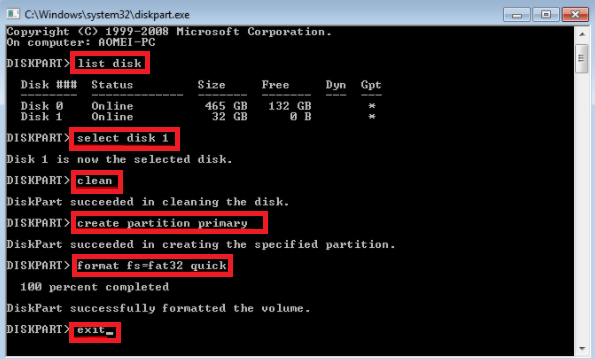
Now when you run the formatting command as a root user, your USB drive will be successfully formatted. Therefore, please unmount the drive through the following command: $ sudo umount /dev/sdb1 You can only format an unmounted USB drive, otherwise, you will get the following message: You will be using the location as per the output you got from the df -h command.ģ.

Use the following command in order to format the USB as per the VFAT file system: $ sudo mkfs.vfat /dev/sdb1 The last line in the output lists /dev/sdb1 as our USB drive.Ģ. Open the Terminal application via Dash or the Ctrl+Alt+T key combination and type the following command: $ df -h the first step is to identify the USB drive correctly to avoid formatting another drive by mistake.

Even a beginner can format a USB drive using the commands described here.ġ. Format USB Drive Through the Command Lineįormatting a USB drive is very easy via the command line. You can format a USB drive both from the command line and from the graphical user interface, whichever you prefer. There are several ways to format a USB drive, and we’ve listed a few of them in this article so you can see which one works for you. It happens every now and then that we need to format a USB drive to change the file system, delete the data completely or get rid of a virus that has infected it.


 0 kommentar(er)
0 kommentar(er)
